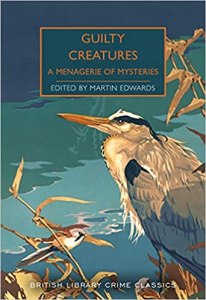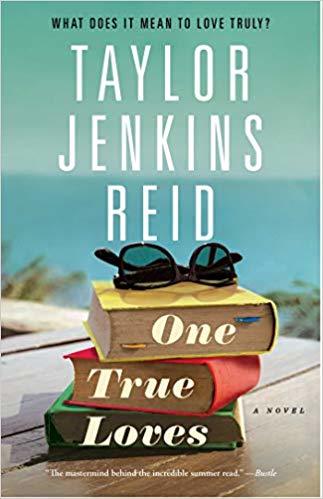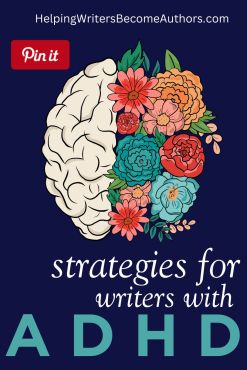 Note From KMW: Earlier this year, I received an email from Bret Wieseler, requesting, “I would love to see a post about writers with ADHD. If you’ve never struggled with it yourself, maybe you know someone who has and can share their thoughts, methods, management strategies, etc. You offer such great insight into the many aspects of being a writer. I’m sure some of your readers, like myself, who struggle with ADHD would appreciate any advice you could offer.”
Note From KMW: Earlier this year, I received an email from Bret Wieseler, requesting, “I would love to see a post about writers with ADHD. If you’ve never struggled with it yourself, maybe you know someone who has and can share their thoughts, methods, management strategies, etc. You offer such great insight into the many aspects of being a writer. I’m sure some of your readers, like myself, who struggle with ADHD would appreciate any advice you could offer.”
I immediately knew who to call on, and I am excited to share a guest post today from a writer who has been a part of my own journey almost from the very beginning. Johne Cook and I met on an online writing forum over 15 years ago, and he remains one of my favorite people to have entered my life in this journey. I have long admired his pragmatism, his insight, and his general cool in the face of the Internet’s insanity. To this day, I will often ask myself, “What would Johne do here?”
He has always been open about his experience as a writer with ADHD—both the challenges and his solutions for overcoming them. Today, I’m excited to have the opportunity to let him share his experience, tips, and resources with you. Enjoy this treasure trove of insight!
***
Discovery
I wish I knew then what I know now.
For my first 45 years, I thought I was broken: I was a daydreamer, I couldn’t focus on things everyone else thought were important, I fidgeted when I should have been focusing, and I focused intently on the wrong things when people wanted my attention elsewhere.
It’s not like there weren’t clues. I excelled as part of an award-winning marching band in high school where marching in unison was expected, but it was like I was out of step with society.
I had difficulties with organization, time management, and sustaining attention in non-stimulating environments.
I couldn’t make important decisions to save my life. I kept putting things off. I had health problems, money problems, interpersonal problems.
I waited until the 11th hour to begin anything important, and things frequently fell through the cracks.
When I was young, what I wanted most was to be “normal.” But the older I got, the more I believed that was never my reality or calling.
Everything changed the day I heard a piece on NPR called “Adult ADHD in the Workplace.” As they discussed what ADHD was and shared six basic questions, I realized I checked five of the six boxes. They shared a link to a website, and I double-checked my results when I got home.
And then I met with a doctor and confirmed the diagnosis. My entire identity changed.
When I tried two different medications that gave me additional focus at the expense of my creativity (and some other small side effects), I sensed, for the first time, that my creativity was somehow tied to my condition. I valued my ability to sling words, see patterns, and make intuitive leaps that others around me couldn’t.
Because I valued my creativity, I ultimately handled my ADHD through other means that I’ll talk about below.
I realized I could either run from my ADHD or embrace it.
I decided to lean into it.
Communication
Knowing is half the battle. Knowing this about myself (and knowing that I was special, not broken) changed the way I saw everything.
I started by talking to my wife Linda and my family about what I was like and gradually increased my communication to include my boss and peers at work.
For some of them, what I told them was no surprise, and my biggest pleasant shock was how cool everyone was about it.
Finally, when appropriate, I shared about my ADHD with people I met out in the world. Letting people know what I was like set expectations and minimized confusion.
Once I had that handled, I moved on to the fun stuff.
ADHD as a Superpower
If attention deficit is the disorder, attention hyper-focus is my superpower.*
During the pandemic, Linda and I watched an interrupted season of The Amazing Race, mostly for Penn and Kim Holderness from YouTube’s The Holderness Family. It was only while watching the show that we learned that Penn was very ADHD. They referred to his ADHD as a superpower, and I saw with my own eyes how his ADHD helped him with pattern recognition, creative outside-the-box thinking, and hyper-focus during challenges.
And watching Penn at work on the show changed how I viewed my own ADHD.
In short, when managed effectively and embraced for its positive attributes, ADHD can empower writers to harness their inner strengths and achieve success in various domains of life.
Understanding ADHD in the Writing Process
People with ADHD exhibit different symptoms such as difficulty maintaining attention, hyperactivity, or impulsive behavior. For writers, these symptoms can manifest as challenges in organizing thoughts, staying on task, and completing projects.
However, it’s also associated with high levels of creativity, the ability to make unique connections, and a propensity for innovative thinking.
Challenges Faced by Writers With ADHD
(The following challenges are common but not universal.)
- Distraction: Writing progress can be derailed by the lure of new ideas, social media, or even minor environmental changes.
- Difficulty Organizing Thoughts: It can be daunting to translate a whirlwind of thoughts into coherent, structured writing.
- Procrastination: Delaying writing tasks in favor of more immediately rewarding activities.
- Impulsivity: Starting new projects without finishing current ones can lead to a cycle of uncompleted works.
Despite these challenges, many writers with ADHD have developed strategies to thrive.
Strategies and Tools for Writing with ADHD
I decided against medication. Once I took medication off the table, I began leaning harder on software tools to become more organized and to remind myself of important things.
Turning ADHD challenges into advantages requires a combination of personal strategies, environmental adjustments, and technology.
Linda and I are a team—she knows to prompt me to use my tech to capture ideas or thoughts in the moment, and I’ve become better at tracking my ideas by noting them in my phone or on my calendar.
Today, there are more tools available than ever.
Here are several approaches:
1. Structuring the Writing Environment
Minimize Distractions: Create a writing space with minimal visual and auditory distractions. Tools like noise-canceling headphones or apps that play white noise can help.
Establish Routines: Having a set writing schedule can provide structure and make it easier to start writing sessions.
2. Breaking Down Tasks
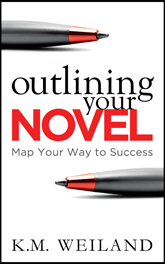
Outlining Your Novel (Amazon affiliate link)
Use Lists and Outlines: Breaking writing projects into smaller, manageable tasks can make them less daunting. Outlining can also help organize thoughts before diving into writing.
Set Small Goals: Focus on short, achievable objectives, such as writing a certain number of words daily, to build momentum.
3. Leveraging Technology
Calendars: Google Calendar or Fantastical (MacOS only) free up my mind and keep me up-to-date.
Writing Software: Applications like Scrivener or Google Docs offer features to organize ideas, research, and drafts in one place.
Time Management Apps: Pomodoro timers or task management apps like Trello can help manage time and keep track of progress.
Pocket: A social bookmarking service for storing, sharing, and discovering web bookmarks.
SnagIt: A screenshot app on my computer where I capture and store screenshots in folders for later use. Also does optical character recognition (OCR) on text strings, allowing me to replicate URLs with copy/paste.
Note-taking apps: Apple Notes—my second mind that I can access from any of my Internet-connected devices. Notion—a beefier app for more sophisticated note-taking
4. Embracing the Creative Process
Allow for Free Writing: Set aside time to write without worrying about coherence or structure. This can help capture creative ideas without the pressure of perfection.
Develop a System for Capturing Ideas: Use note-taking apps or carry a notebook to jot down ideas as they come, regardless of the time and place.
5. Seeking Support
Writing Groups: Joining a writing group or participating in writing challenges can provide accountability and motivation.
Professional Help: For some, working with a coach or therapist specializing in ADHD can offer personalized strategies and support.
Success Stories: Writers With ADHD
Many successful writers have ADHD and have spoken about how it affects their creative process. Writers emphasize the importance of embracing their non-linear thinking, and view it not as a hindrance, but as a source of creativity and originality:
- Agatha Christie: The “Queen of Crime” was known for her prolific output and intricate plots. Some speculate that her energetic writing style and ability to focus intensely on details could be signs of ADHD.
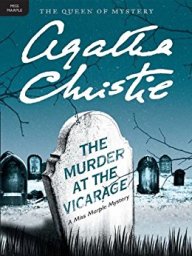
Murder at the Vicarage by Agatha Christie (affiliate link)
- Dav Pilkey: The creator of the popular children’s book series Captain Underpants has openly discussed his struggles with ADHD. He credits his condition with helping him be a creative thinker.
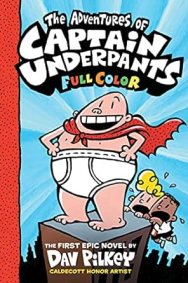
The Adventures of Captain Underpants by Dav Pilkey (affiliate link)
- John Irving: The author of The World According to Garp was diagnosed with ADHD as an adult and has spoken about how his condition has both helped and hindered his writing process.
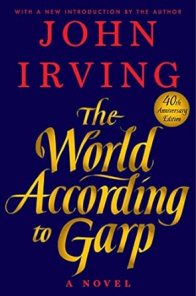
The World According to Garp by John Irving (affiliate link)
Conclusion
As a writer, I don’t see things the way others do. I think outside the box.
My ADHD makes me more:
- Creative
- Energetic
- Innovative
- Hyper-focused on things that capture my attention
Don’t let anyone tell you ADHD is a curse. You can view it as a gift. You can embrace it.
And then you, too, can lean into it!
Resources and Further Reading
For those looking to dive deeper into managing ADHD as a writer, or seeking inspiration from those who’ve navigated similar challenges, here are some invaluable resources:
* Hyperfocus is common but not universal.



